At a time when the South Asian diplomacy would remain preoccupied with contesting narrative in the United Nations, new situations have erupted in the neighbourhood that is testing the capacities of diplomacy. India and Pakistan are caught in a new diplomatic tension as the USA and China are fighting the one-upmanship battle, writes Tasavur Mushtaq
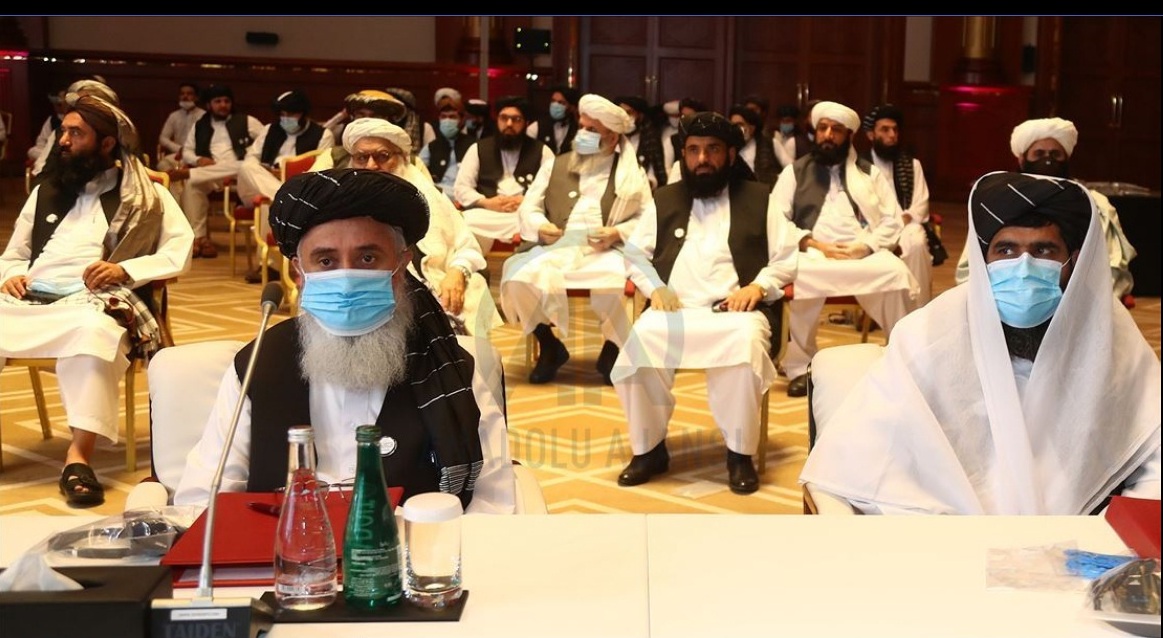
In the diplomatic and strategic affairs circles, September has remained always important. In the Indian subcontinent, it was sort of a major event because the governments in Delhi and Islamabad would fly planeloads of experts to play the diplomatic matches on the sidelines of the United Nations General Assembly. Thanks to Kashmir, it would start early at the United Nations Human Rights Council that has already released two scathing reports on the state and status of human rights in Jammu and Kashmir.
The pandemic, this year has put almost everything on halt. The world leaders would be saving a lot of taxpayers’ money by addressing their counterparts virtually, directly from their offices. There will be diplomatic tensions but there will be net savings too.
That, however, does not means the diplomacy is not at work, in this part of the world. Key issues at the top of diplomacy right now are the Sino-Indian tensions over Ladakh heights and the US-brokered Intra-Afghan Talks (IAT) between the Kabul government and the Taliban. Both India and Pakistan have stakes in these talks but nobody knows what the future holds.
Ladakh Heights
Since May, Beijing and Delhi have had a series of talks at various levels – the army commanders’ level on the Line of Actual Control (LAC), at the National Security Adviser level, and more recently between the two Defence Ministers and the Foreign Ministers on the sidelines of the Shanghai Cooperation Organisation (SCO) meetings in Moscow. There was a joint statement after the last Foreign Ministers meeting, which, experts think, is either a repetition of an earlier agreement if not a literally annulling of earlier bilateral mechanisms. On the ground, however, the standoff continues.
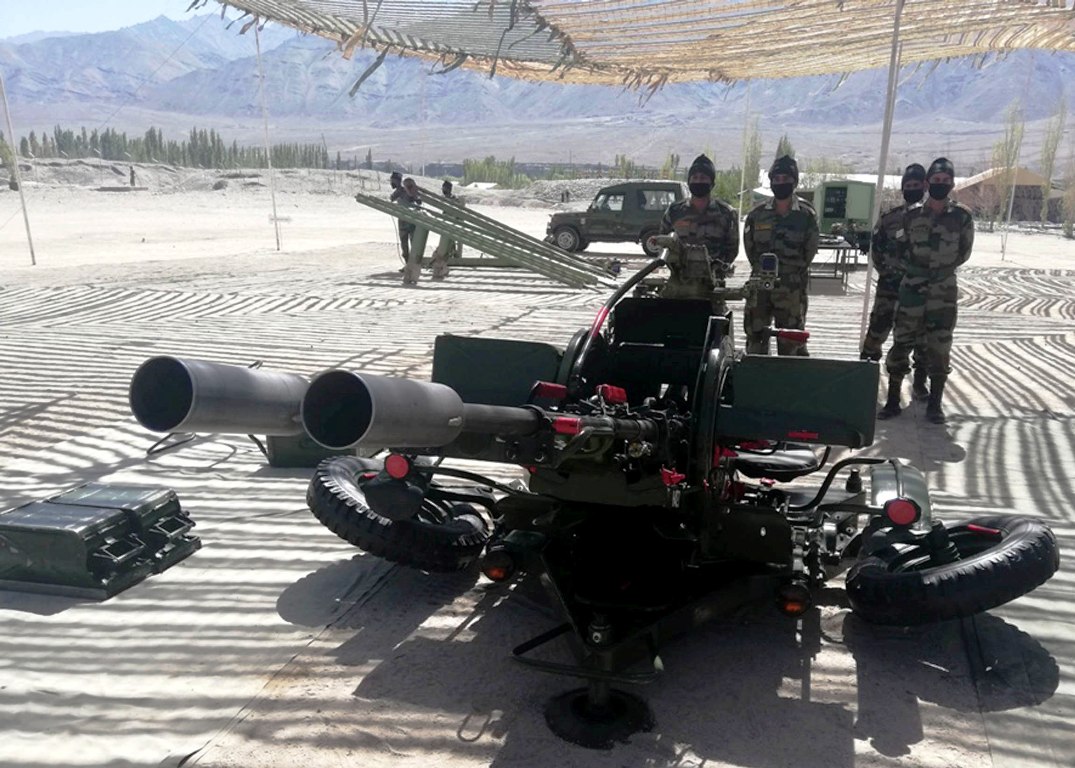
Defence Minister Rajnath Singh talked harshly against China in the parliament but avoided offering details that are already in the public domain. China is controlling around 1000 sq km territory that the Indian army was patrolling till early this summer. These include almost 900 sq km area in Depsong area alone. Right now, there are two areas of crisis where the rival armies are in an eyeball to eyeball confrontation – Depsong and Pangong Pso. Though the warning fires were reported four times, it, fortunately, did not escalate tensions further.
Writing in The Wire, strategic affairs expert Sushant Singh said the real crisis is the Sub Sector North (SSN), east of Siachen Glacier that envisages a vast belt between the Saltoro ridge on the Pakistani border and the Saser ridge close to the Chinese border. “It is the only place where physical military collusion can take place between Pakistan and China – and the challenge of a two-front war can become real in the worst-case scenario,” Singh noted. “In such a scenario, it will be nearly impossible for India to launch a military operation to wrest back Gilgit-Baltistan from Pakistan.” Interestingly, the Depsong is a flat terrain that suits a mechanised war but its location from the supply lines makes it “highly vulnerable to ingress by the PLA”.
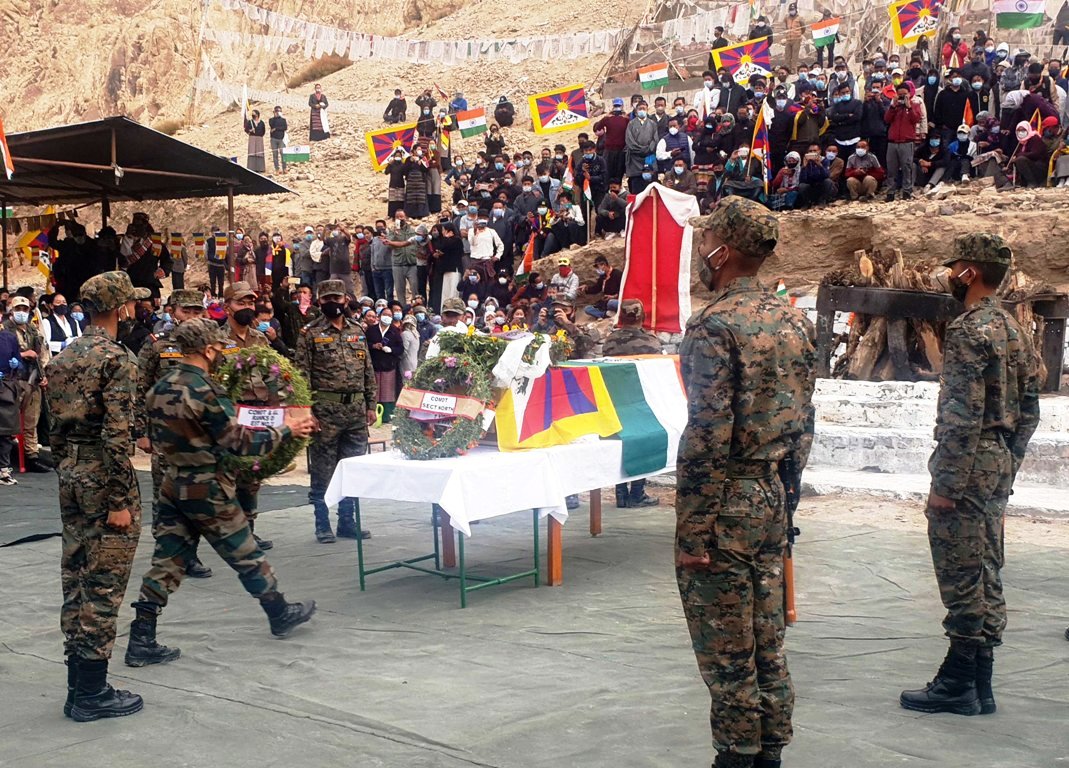
Barring a couple of ridgelines that India dominates in the south of Pangong Tso, the standoff continues on salty lake’s both the banks. There were some tensions in which a member of the Special Frontier Force (SFF) was killed and another injured. The SFF, worth mentioning here, is a high altitude fighting force that was raised in 1962 as Establishment 22 with American training and weapons after careful selection of the recruits from Tibetan refugees in India. The force saw action in 1971 in the creation of Bangladesh and in 1999 Kargil ‘war’ as well. However, it is for the first time that the Force’s contributions are being publicly acknowledged.
Since the diplomacy seemingly has not worked so far, India is working towards protracted deployments in the inaccessible and distant locations for the winter. Last week, the army authorities showcased the supply chain and the massive movement of the materials and war machines that were LAC bound. These include howitzers guns and the Chinook transporter choppers flying huge loads out of Leh. Part of Leh looks like a huge garrison and these days it is noisy owing to increased flights of the fighter jets overhead. Slightly before the snowfall over high reaches, authorities expect the completion of the Atal Ruhtang Tunnel that will keep the supply lines intact during the freezing winters.
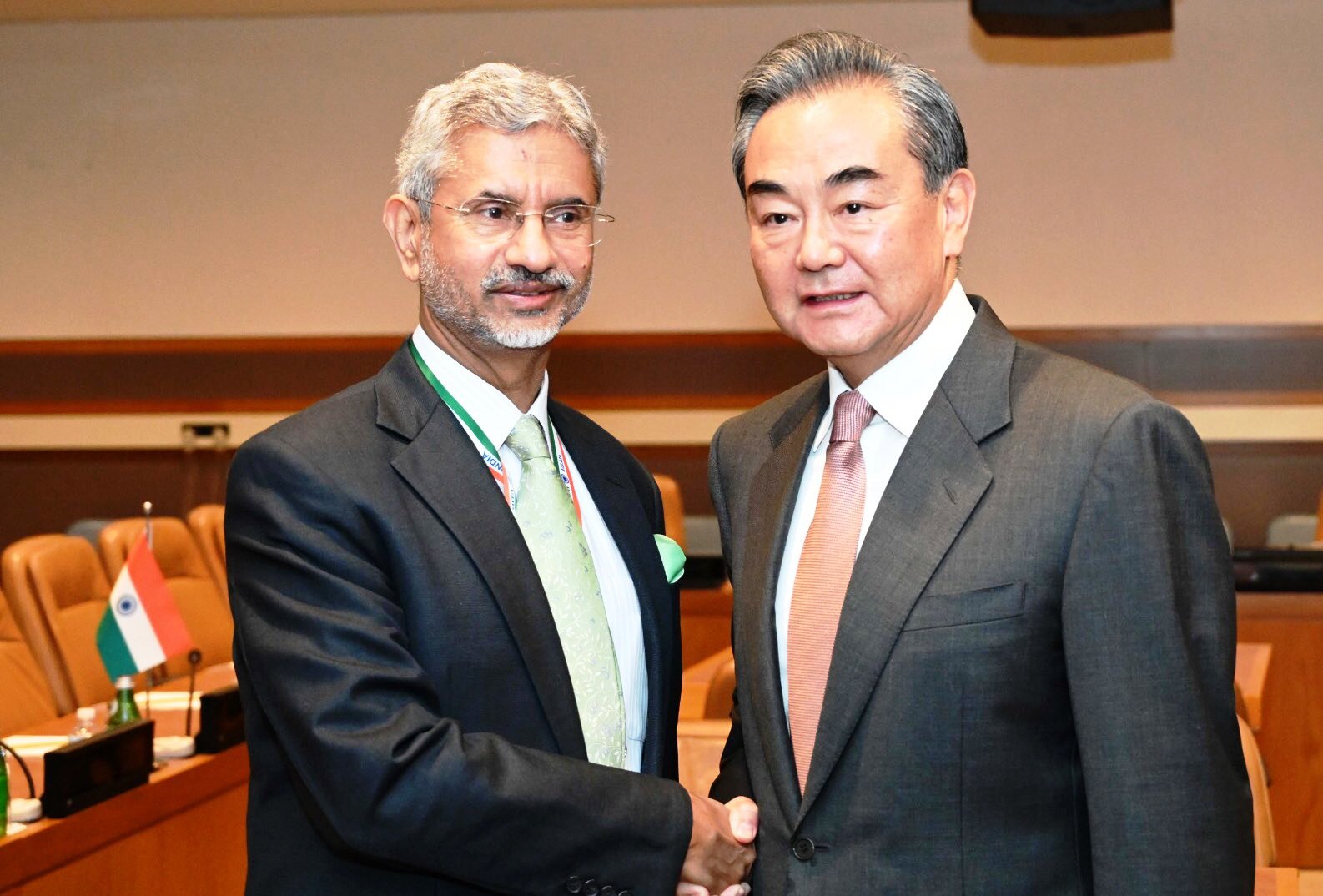
The US $400-million all-weather 9-km tunnel is expected to be formally thrown open by Prime Minister Narendra Modi later this month.
Preparations apart, deploying more than 20-25000 troops in sub-Siachen Glacier conditions is not so easy. It costs a fortune. Retired General A P Singh and other army personnel with Ladakh experience told defence expert, Rahul Bedi that “conservatively, it would cost India around Rs 100 crore per day or Rs 36,500 crore annually to sustain a 25,000-30,000 strong force along a 250-300 kilometre (km) frontage to prevent the PLA from seizing more territory than it has already”. He added: “In the closest such comparison, the daily cost of maintaining a large brigade of some 5,000 personnel along the 76 km-long 17,700 feet high Siachen Glacier that India captured in 1984, is at present around Rs 6 crore a day or around Rs 2,190 crore per year.” In the last 36 years, Bedi quoted official figures saying 869 soldiers, including 33 officers, were killed over the glacier as the government spent Rs 7,500 crore to import clothing and mountaineering equipment for soldiers.
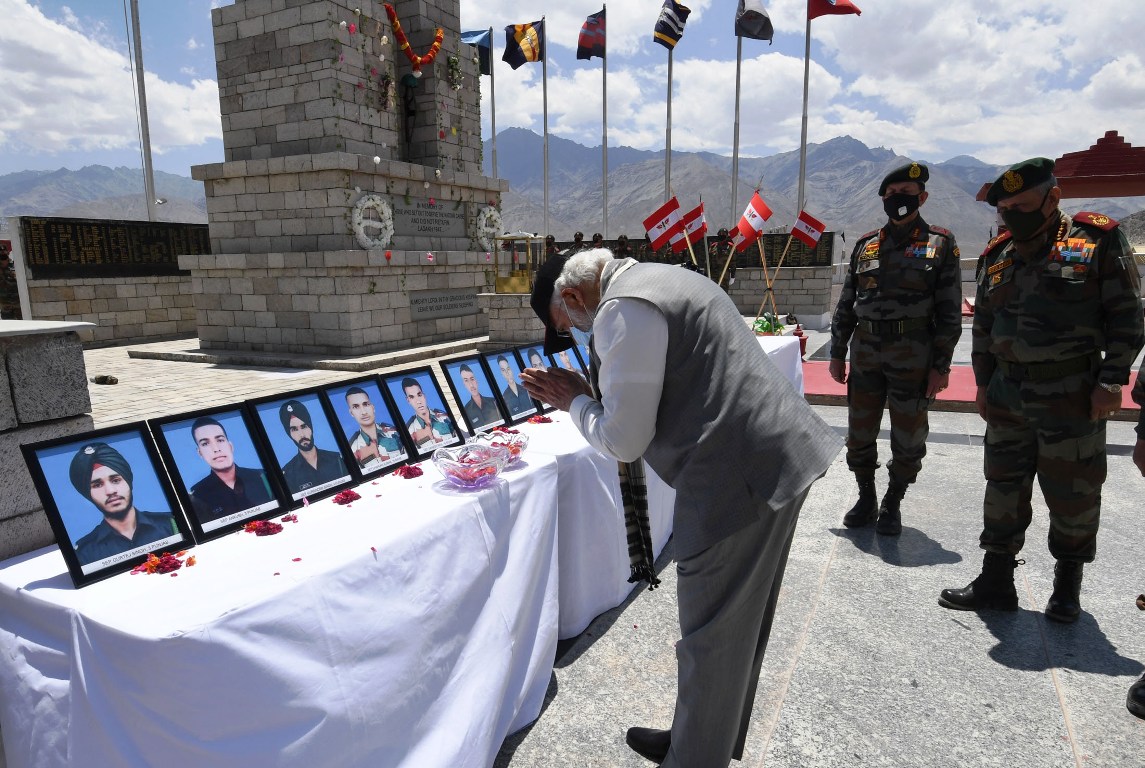
India Today’s Shiv Aroor reported that the edges of the lake have already started freezing and by mid-October, the lake will not be navigable for either side. Temperatures have started falling to minus 4 around the lake and minus 14 in Depsong-DBO belt.
But that is not the only front for South Asia diplomacy.
Taliban In Doha
After 19-years, the USA and its allies have finally decided to come out of the Afghanistan quagmire. The initiative is now as real as it looked unreal when Donald Trump was elected to power last time. Americans have brokered a negotiation process involving the Kabul government and the Taliban. US Secretary of State Mike Pompeo flew to Qatar capital, Doha, on September 12, to formally inaugurate the IAT that saw the participation by diplomats from 15 countries. Taliban operate their political office from Doha.
All three sides have their own objectives to achieve. “We are now delivering a set of outcomes that will reduce the costs in blood from our American servicemen and women, in treasure from the American taxpayer and risk to the USA,” Pompeo told the Atlantic Council, after flying home from Doha. “For the first time now in 20 years, Afghans sat down together to begin to pound out what a reconciled peaceful Afghanistan might look like. Under no illusion about who we are negotiating with, who these parties are, how difficult that process will be.”

The US alone has lost 2400 soldiers to their Kabul intervention that came many years after Afghanistan induced the USSR disintegration. The IAT success will lead to the foreign troops leaving the desert nation by April 2021.
Kabul government and the Taliban are insisting that they should make peace and stop the bloodshed. The official side is willing to share power but the Taliban are saying that power is not their objective. They want the occupation of Afghanistan to end so that an Islamic State is established. While the Taliban have, as part of the February agreement, started avoiding attacking the allied troops, they continue their deadly assaults on the Kabul forces. While the talks are underway, the fighting between the rival sides is unabated.
While the allied troops will extricate their staff from the war-wrecked country, eventually, it is India and Pakistan that will have to fight over their importance in the new Afghanistan. Pakistan is Kabul’s immediate neighbour and has sheltered more than 40 million Afghan refugees since the Soviet annexation of the Pathan country. After the US ensured the fall of the Taliban regime in 2001, India has invested more than US 2 billion dollars to create critical infrastructure. The two countries are already battling over their respective contributions in making talks happen! Afghanistan, after all, is the key to India’s aspirations as a regional power.
Glad to receive Amb. Zalmay Khalilzad @US4AfghanPeace this evening. Useful discussions on the Doha Meeting and its follow-up. pic.twitter.com/ClmuSOg4aw
— Dr. S. Jaishankar (@DrSJaishankar) September 15, 2020
The situation was beautifully described by an expert Dr Avinash Paliwal to India Today. “But India’s relationship with the Taliban was defined by the role and the presence of Pakistan. This happened because the Taliban was supported by elements in Pakistan’s political and security establishment in the 1990s. So it’s difficult for the Taliban and its various factions to liberate itself from the India-Pakistan relationship,” Paliwal was quoted saying. “And, here’s the fascinating thing. For a long time, even in the 90s, the Taliban tried very hard to talk to India. It was India that was reluctant because India thought talking to the Taliban would bestow political legitimacy to a movement that ran counter to India’s interests given that it had allies in other parts of Afghanistan too.”
Delhi, however, has been quite restive over the Taliban issue, till recently. It was yet to come out of the crisis in which the Jaish-e-Muhammad hijacked an aircraft and resorted to barter under Taliban supervision at Kandahar in 1999. India wanted a status quo in Kabul and wished the US stays put. But China, Russia and the other world powers think differently. Even the US sees it impossible to retain the territory and has sought one assurance from the Taliban that its soil is not used against the US as was the 9/11 case.
Islamabad, however, is not talking at all. Apparently, it wants the Afghans to own the reconciliation process and avoid getting caught as Pakistan proxy.
But Delhi’s response was dramatic. It ensured a last-minute U-turn. Former ambassador and strategic affairs writer, M K Bhadrakumar recently wrote that US Special Representative for Afghanistan Reconciliation Zalmay Khalilzad would get a cold response and adverse commentary till May for his “well-meaning and pragmatic” advice. The key reason was that Delhi would like to believe that “peace talks were aeons away”.
“Instead of rationally applying their mind, the Indian officials reportedly made a litany of pre-conditions to Khalilzad — the issue of terror emanating from Pakistan impacting peace in Afghanistan, “protection of rights of all sections of the Afghan society, including Afghan Hindus and Sikhs,” and so on,” Bhadrakumar wrote. After his May visit, MEA formally said in a statement: “It was emphasised (to Khalilzad) that putting an end to terrorist safe havens and sanctuaries is necessary for enduring and sustainable peace and stability in Afghanistan.” Delhi would pick interesting reasons: “concern at the upsurge in violence”, “call for an immediate ceasefire” and need to assist Kabul in fighting Covid-19, to peddle its policy.
Last week, however, when Khalilzad flew to Delhi after an overnight halt in Islamabad, Foreign Office was completely changed after a lot of “huffing and puffing”.
“The unconditional U-turn in India’s Taliban policy is so complete that the Indian establishment is overnight celebrating the retreat as a grand historic success of diplomacy,” Bharakumar wrote. Foreign Minister S Jaishanker flew a team post-haste to Doha to share a table with the Taliban. He personally spoke to the conclave. “The main problem for India is that it stands in abject isolation today apropos the Afghan situation. Its ability to influence the course of the intra-Afghan negotiations is nil. None of the demands that Indian officials made to Khalilzad in May has been fulfilled.”
Bhadrakumar’s concerns, however, are beyond the IAT. “China is actively promoting the extension of the China-Pakistan Economic Corridor to Afghanistan. And Pakistan just tightened its grip on the peace talks. The crunch time has come. Pakistan holds a veto card and is determined to use it to marginalise India from the Afghan peace process. Given the Modi government’s hostility toward Pakistan and China, nothing else needs to be expected.”
The show goes on. This season, there is so diplomatic action for the think-tanks knowing the art of encouraging disagreements where agreements could help.















